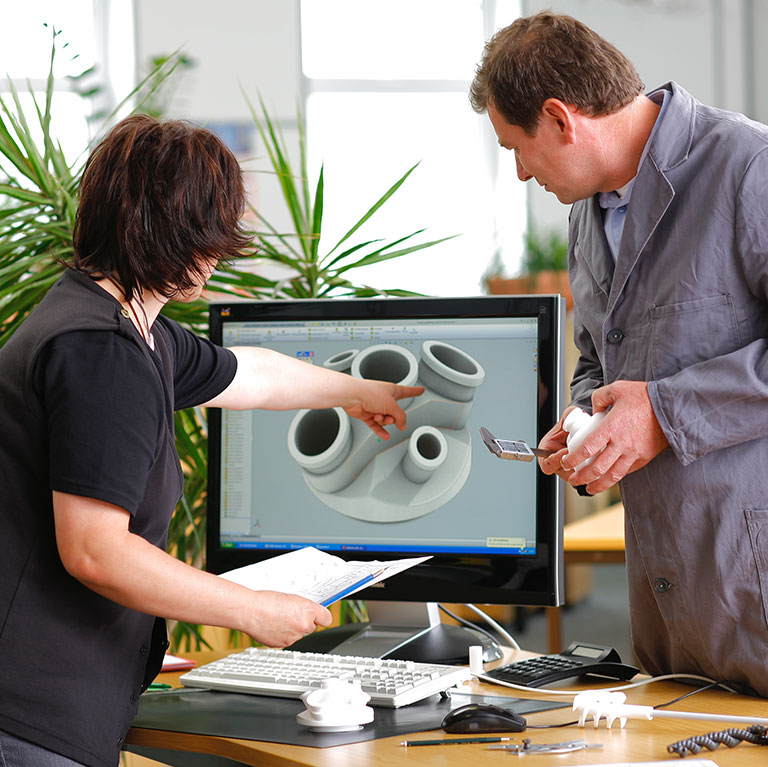A safe protection against electrostatic charging

How does electrostatic charging occur?
Electrostatic charging occurs if the charge particles from surfaces made of insulating materials interchange with the charge particles of surfaces made of conductive materials. If the two surfaces are quickly separated after such a charge exchange the transferred charging cannot flow back to its original source especially with insulating materials. On the one side this leads to an excess charge whereas on the other side it leads to a lack of electrostatic charging. This generates an electrical voltage.
Once the voltage is high enough it will discharge when it gets in contact with a conductive surface. This generates a spark which can ignite solvent vapours or highly combustible liquids.
A separation as described above can happen during decanting of large packages as well as during transportation of products in hose pipes or operation of a stirrer shaft in a stirrer bearing.
How can electrostatic charging be prevented?
Electrostatic charging and the related hazards can be dissipated by means of a connection with earth. Therefore the pipes, components and packages have to be made of static dissipative materials to prevent an electrostatic charging.
What is the advantage of BOLA Ex-Protection Components?
All Ex-Protection Components of BOLA are made of static dissipative PTFE-EX, PFA-EX or PPS-EX. Due to the addition of conductive pigments, e.g. carbon black or electrographitated carbon the technically insulating plastics become conductive as well. At the same time the good chemical and thermal resistance of PTFE are conserved.
In the delivery state all products from BOLA made of PTFE-EX, PFAEX or PPS-EX have a surface resistance of 106 Ohm or better.
In individual cases the added conductive pigments can be damaged by strongly oxidizing products (H2O2, ozone, acids such as azotic acid, lyes, halogens). Thus the conductive pigments can be dissolved and the Components lose their discharge capability. An indication is also the bleaching of the black colour of the EX-Protection components. In extreme cases of a complete oxidation, PTFE e.g. can superficially take the colour grey or white again. In these cases we recommend the renewal of the component to guarantee a safe operation.
PTFE-EX, PFA-EX as well as PPS-EX are inherently flame-retardant and self-extinguishing. The oxygen index (LOI-value) stands for the oxygen content in the ambient atmosphere in which material continues burning after ignition without additional energy source. The oxygen index of PTFE-EX and PFA-EX is approx. 95 %, the oxygen index of PPS-EX is approx. 50 %. This means all materials do not burn under normal conditions since the oxygen content of the air is approx. 21 %.
The materials are dyed black and therefore UV-resistant. Consequently they can be used for products which react to UV rays.
How is earthing made?
Connection to earth is made by connecting a cable clamp or a ground clip to a provided earthing bore. The earthing of the complete system has to be executed professionally and in compliance to the according instructions.
How can I identify BOLA Ex-Protection Components?
All BOLA EX-Protection Components made of PTFE-EX can be identified by their black colour. Screw Caps made of PPS-EX are inscribed accordingly. In case of ambiguities, an attrition test can help. The component is rubbed slightly on a white piece of paper. A colouration indicates that the component has conductive particles. Only the measuring of the surface resistance respectively of the specific contact resistance absolutely proofs whether the items are made of static dissipative material.





